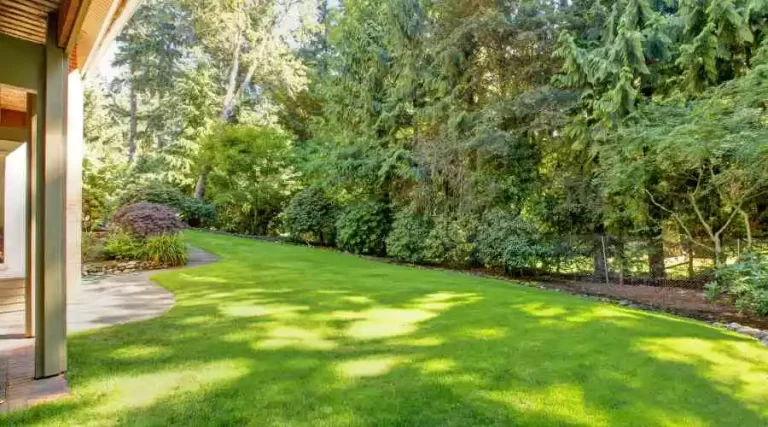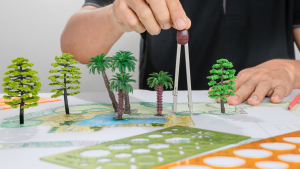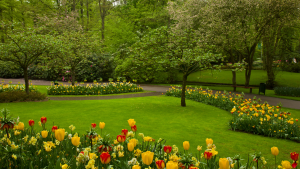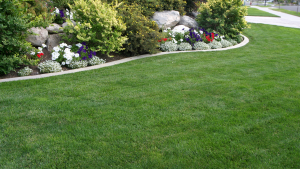Did you know that whether you have warm- or cool-season grass determines the optimal time to apply fertilizer in the spring? It is real! The greatest time to fertilize cold-season grasses, or lawns that grow well in cooler temperatures, is in the fall when the growing season is at its busiest. Of course, you can also use a tiny amount of slow-release fertilizer in the spring if you forgot to fertilize in the fall or if your grass simply doesn’t seem to be doing too well. It’s crucial to fertilize warm-season grasses that enjoy the heat once active growth begins in the spring. In the spring, when is the ideal time to fertilize grass? The best time to fertilize is mid – to late spring. All season long, this will guarantee good growth and deter weeds.
Are you prepared to start your spring landscaping project off right? Here are some guidelines you should follow to handle fertilizer safely when the optimal time to apply it in the spring arrives, as well as some other actions you can do to promote a healthy lawn’s growth.
Handle fertilizer carefully
Fertilizer feeding is necessary for a lush, healthy appearance of your grass. However, it’s crucial to handle all fertilizers with due caution and in accordance with safety protocols. Make sure you thoroughly read and follow the packaging directions before you start. When handling fertilizer, it’s also crucial to use gloves and safety glasses because the majority of varieties do contain chemicals that can irritate your skin and eyes. Keep kids and pets away from the area while applying, and take any additional safety measures that are required. Learn more about the security of pets and fertilizer here. Make sure to clean your garden tools, your shoes, and any stray grains off walkways after applying the fertilizer. This will lessen the chance of inadvertent exposure to the fertilizer’s ingredients. Finally, keep leftover fertilizer secure, dry, and out of the reach of kids and dogs. At this link, you may learn more about fertilizer safety and how frequently to feed grass on your lawn.
Lawn Cuttings
If you have a lawn, you will need a strategy for dealing with grass cuttings. You might be tempted to throw the clippings in the trash, but you should think about using them instead. Grass cuttings are an excellent natural fertilizer that aids in the lush, emerald growth of lawns. After mowing the grass, simply leave the clippings on the lawn to help feed and water the newly cut grass while also adding the necessary nitrogen to the soil. Grass clippings can be used as compost in a garden to help nourish a range of plants. Visit this site to find out more about how to use grass clippings.
Related Subject: Residential Landscape Lighting: 4 Trends to Know for Your Baton Rouge Lawn
Enhance Your Lawn With Compost
You may also add compost to your lawn to promote healthy grass growth and beauty. Compost is organic material that has decomposed and is necessary for plant growth. Composting a lawn or garden can assist the soil’s condition by breaking up compacted regions and promoting the development of healthy microorganisms. A variety of food leftovers, paper and cardboard waste, and grass clippings can be used to make compost. You can transform a mound of organic stuff that might otherwise go to waste into fertilizer that your lawn will enjoy with a little care and effort.
Overseed
Have you thought of overseeding your lawn if it appears a little patchy? Without having to start from scratch and entirely remove the grass, overseeding is a way to improve the health and beauty of a lawn. It can be used to fix problems like brown or bare spots or to transition between warm- and cool-season grasses for a consistently green lawn. The first step in overseeding a lawn is to prepare the ground. Rake the places where you wish to plant seeds to loosen the soil after cutting the existing grass short. Finally, add grass seed, water, enriched soil, or compost, and watch as your new grass emerges within a few days. Visit this website for more information on how to overseed a lawn effectively.
Pre-emergent herbicide is also administered in the spring to control crabgrass. In general, you cannot properly seed until the fall after a pre-emergent has been applied in the spring. Technically, you could plant 16 weeks after the treatment, but it would put you in the midst of the hottest portion of summer in most areas. At such a time, it is not advisable to seed. Hold off on the pre-emergent treatment if you decide to seed. Once the newly planted grass has been repeatedly mowed, you can cure the crabgrass that emerges.
Get Help with Expert Lawn Fertilization
Even while fertilizing your lawn is a crucial component of routine lawn care, it does take time and expertise to complete. It can be difficult to know how and when to fertilize grass and garden plants. It might be time to bring in a professional if you still have questions about when to fertilize the grass in the spring or whether you can overfertilize your lawn.
Our team of experts at Baton Rogue Landscape Pros can evaluate your soil, suggest the best fertilizer for your particular type of grass, and administer it for you when the time is perfect. Get more information about this and the other top-notch services we provide.





